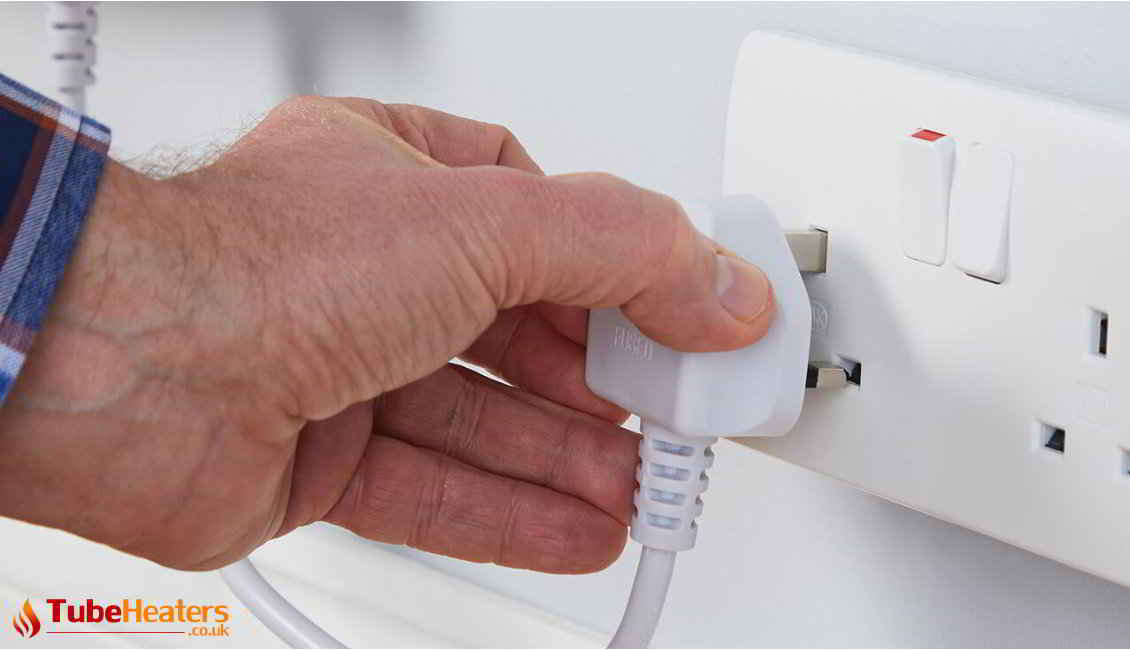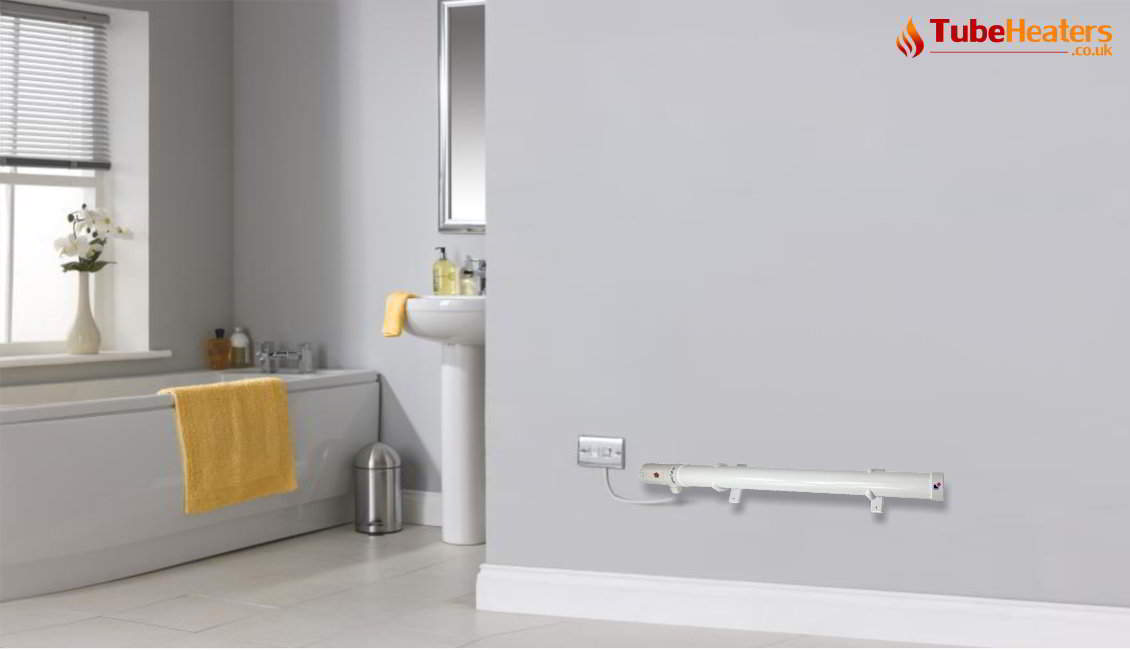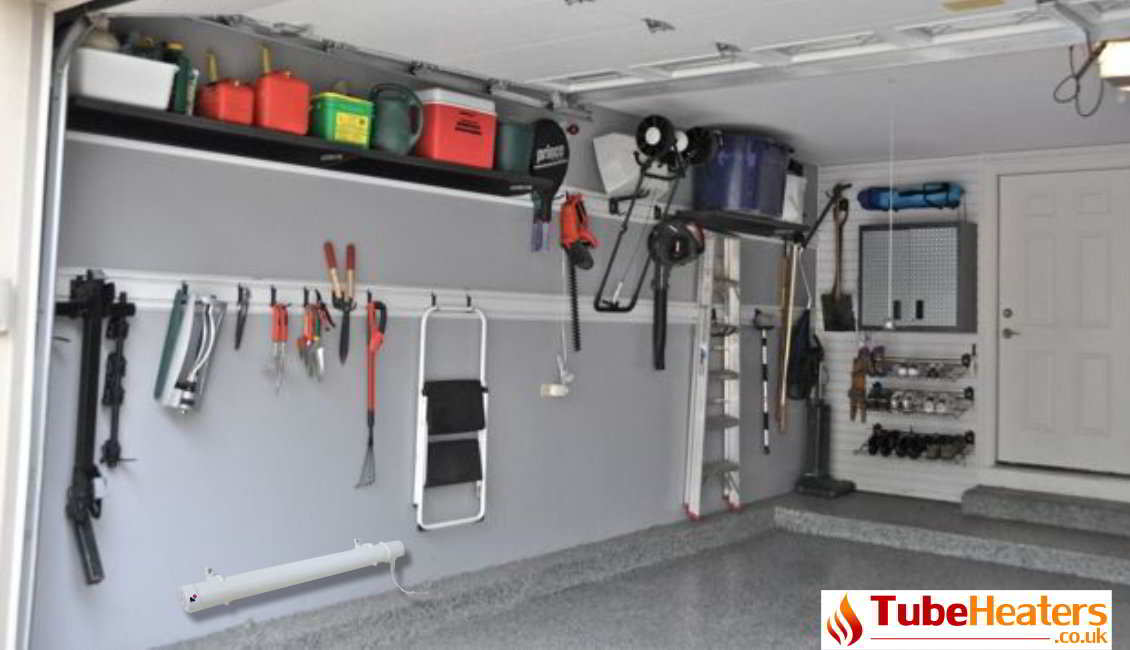
In the chilly winters, the quest for warmth leads us to different heating solutions. One such efficient and versatile solution is the plug-in wall heater. We'll examine all of these varieties of heaters in this extensive guide, but we'll pay particular attention to tube heaters as they've shown to be the most affordable option.
1. An Introduction to plug in electric wall heaters
Plug in electric wall heaters are heating appliances that can be conveniently plugged into a standard wall socket. They are typically compact, portable, and require no complex installation. However, like all devices, they come with both advantages and drawbacks.
1.1 Advantages of a plug in wall heater
Portability: You can relocate them as per your heating requirements.
Cost-effective: plug-in electric wall heaters in the UK are cheaper to buy and install than other types of heaters. They also reduce your utility bills by heating only the needed space and using electricity efficiently.
Easy to install: plug in heater for room does not require any duct work or piping, and can be easily mounted on the wall or placed on the floor. They can be plugged into any standard outlet and are ready to use.
Safe and reliable: plug in electric wall heaters have built-in safety features such as overheat protection, auto shutoff, and cool-to-touch surfaces. They do not produce any flames, fumes, or carbon monoxide, and are less likely to cause fires or burns than other heaters.
Fast and efficient: a plug in wall heater heats up quickly and warms the immediate area as soon as you switch it on. They use dry thermal elements or ceramic cores that retain heat and distribute it evenly. They also come with a range of controls, including thermostats, timers, and smart features that let you set the temperature and plan the heating according to your preferences.
Small and discreet: plug in wall heaters are compact and slim and can fit into any small space without taking up much room. They can match your décor because they are available in a variety of patterns and hues. They are also quiet and do not disturb your peace.
1.2 Drawbacks of a plug in wall heater
Long cords: plug in electric wall heaters may have cords that are too short for your needs, or that are unsightly and pose a tripping hazard. Use of power strips or extension cables may be necessary, which raises the possibility of electric shocks or fire.
Limited to small spaces: plug in wall heaters are designed to heat up small areas, such as single rooms or offices. They are not suitable for heating large spaces, such as entire houses or buildings. It may be necessary for you to use several heaters or combine them with different heating systems, which would raise your expenses and energy usage.
No ducts: a plug in wall heater does not have ducts that can distribute the warm air throughout the room. This means that the heating may be uneven or insufficient, especially in corners or faraway areas. You may need to use fans or other devices to circulate the air, which can add to the noise and electricity usage.
Potential safety hazards: plug in wall heaters can pose various safety risks, such as overheating, burning, sparking, or catching fire. If they are positioned too close to your carpets, furniture, or walls, they may potentially cause harm to such items. You need to be careful when using them and follow the manufacturer’s instructions and precautions.
Noise: plug in electric wall heaters may produce noise (especially those with fans or blowers) when they are operating, such as humming, buzzing, or clicking. This can be annoying or distracting, especially if you are trying to sleep, work, or relax. The noise level may vary depending on the type, model, and quality of the heater.
Air dryness: a plug in heater for room may dry out the air in the room, which can cause discomfort or health problems. In addition to irritating your skin, nose, eyes, and throat, dry air can increase your risk of being sick, having allergies, or having asthma attacks. You may need to use a humidifier or moisturiser to restore the moisture in the air.
Cost: plug in electric wall heaters may have a low initial cost, but they may not be the most economical option in the long run. They require electricity, which might be expensive based on consumption and location. They may also require more maintenance and repairs, have a shorter lifespan, and are less efficient than conventional heaters. You may end up spending more money on your heating bills and replacement costs.
2. An Overview of plug in electric wall heaters in the UK Market
The UK market offers various types of plug in electric wall heaters, including Ceramic Electric Radiators, Infrared Heaters, Fan Heaters, Oil Radiators, and Tube Heaters. We'll delve into each of these, examining their workings, pros and cons, costs, and top models.
2.1 Ceramic Electric Radiators
Ceramic electric radiators are popular for their quick heating abilities. They work by heating a ceramic element within the radiator, which then emits the warmth into the room.
Pros:
Quick Heating: They heat up rapidly, providing warmth almost immediately.
Safety: The ceramic elements don’t get as hot as other heating elements, reducing the risk of burns.
Cons:
Heat Retention: They don’t retain heat for long after being switched off.
Higher Upfront Cost: They can be more expensive to buy than other heaters.

2.2 Infrared Heaters
Infrared heaters work by emitting infrared light, which humans perceive as heat. This heat is absorbed directly by our skin and clothes, making us feel warm.
Pros:
Efficiency: They heat objects directly, not the air, making them very efficient.
Immediate Warmth: They provide instant heat.
Cons:
Limited Coverage: They only heat the area directly in front of them.
Safety: They can pose a burn risk if touched when on.
2.3 Fan Heaters
Fan heaters work by using a fan to pass air over a heat source. This warm air is then blown into the room.
Pros:
Quick Heating: They can warm up a room quickly.
Portability: They're usually lightweight and easy to move around.
Cons:
Noise: They can be quite noisy due to the fan.
Energy Consumption: They can use a lot of electricity, increasing running costs.
2.4 Oil Radiators
Oil radiators work by heating oil that is sealed within the radiator. This heated oil then heats the metal surrounding it, which in turn heats the air.
Pros:
Heat Retention: They retain heat for a long time after being switched off.
Noiseless Operation: They operate silently.
Cons:
Slow Heating: They take a long time to heat up.
Size and Weight: They are usually larger and heavier than other heaters.
2.5 Tube Heaters
Tube heaters work by heating a wire element inside a tube, which then radiates heat.
Pros:
Efficiency: They are very energy-efficient, keeping running costs low.
Safety: The tube design prevents direct contact with the heating element, reducing burn risk.
Cons:
Heat Distribution: They may not distribute heat as evenly as other heaters.
Installation: They can rest on the floor, but if you want to install them on the wall they need basic installation knowledge.
3. More about tubular heaters
When it comes to heating your home or office space, efficiency and cost-effectiveness are key factors to consider. Tube heaters have emerged as a popular choice for many, offering an efficient and economical solution for keeping spaces warm. Let’s delve into the world of tube heaters, exploring their benefits and why they are considered the cheapest running cost for plug in electric wall heaters in the UK.
Understanding Tube Heaters
Tube heaters are a type of electric heaters that use a metal tube filled with a heating element to produce heat. They may be installed on walls or floors since they are slender and lengthy. Tube heaters are often used to provide low-cost background heating in small or confined spaces, such as bathrooms, attics, airing cupboards, conservatories, sheds, small garages, wardrobes, kennels, or greenhouses. Additionally, they can lessen the risk of frost and moisture damaging walls and windows. Tube heaters are available in different sizes and wattages, and they can have a thermostat control to regulate the temperature and a timer. A cost-effective and efficient approach to maintaining dry heat in your room is to use a tube heater.
Cost-Effectiveness
One of the key advantages of tube heaters is their cost-effectiveness. Unlike traditional convection heaters that heat the air, causing heat loss and inefficiency, tube heaters directly warm objects and people in space. This targeted heating approach results in significant energy savings, as less heat is wasted. Furthermore, tube heaters are an efficient choice since they employ electric current as their energy source—especially when contrasted with other plug in electric wall heaters.
Efficient Heat Distribution
Another benefit of tube heaters is their ability to provide even and consistent heat distribution. The radiant heat emitted by the tubes warms objects and surfaces throughout the space, creating a comfortable environment without temperature variations. This efficient heat distribution ensures that the entire area experiences the benefits of the heating system, unlike some traditional heaters that may lead to uneven heating.
Plug in Wall Heater
When it comes to plug in electric wall heaters, tube heaters stand out for their low running costs. The efficient energy utilisation and targeted heating approach make them an economical choice for those looking to minimise their heating expenses. Tube heaters are a useful solution for both commercial and domestic applications because of their relatively simple installation.
Cheapest Running Cost
When compared to other plug in wall heaters, tube heaters are recognised for their lowest running costs. The combination of energy efficiency, even heat distribution, and targeted heating makes them a cost-effective solution for maintaining warmth in various settings. Whether used as a primary heating source or a supplementary system, tube heaters offer an economical way to keep spaces comfortable without breaking the bank.
Heating without the drawbacks of the plug in electric wall heaters
No ducts: Tube heaters do not require any duct work or vents to distribute the heat. They heat the objects and surfaces directly, rather than the air. This means they can be installed in any space, regardless of the shape or size.
No potential safety hazards: Tube heaters are designed to operate at low surface temperatures, and they have a protective casing to prevent accidental contact with the heating element. They also have a built-in safety cut-out switch to prevent overheating. There are also optional guards to provide extra protection from children or pets.
No noise: Tube heaters are silent and do not produce any fan noise or vibration. They are ideal for spaces where noise is an issue.
No air dryness: Tube heaters do not dry out the air or create dust or allergens. They maintain a comfortable and healthy humidity level in the space. Those with sensitive skin or respiratory issues can wear them.
Low buy and operation cost: Tube heaters are inexpensive to buy and easy to install. They require little upkeep and endure a very long period. In comparison to other heater kinds, they consume less power and are more energy-efficient. They can assist you in lowering your carbon footprint and heating costs.
Why tube heaters are the best choice for plug in electric wall heaters
Tube heaters have become a very attractive choice for people and companies looking for economical, effective heating solutions. Their ability to provide targeted, even heat distribution while minimising running costs sets them apart as the cheapest running cost for plug in wall heaters. With their numerous benefits and economic advantages, tube heaters continue to be a popular choice for those prioritising energy efficiency and affordability in their heating systems.
4. Conclusion
The best plug-in electric wall heater for you will ultimately rely on your needs. Each type has advantages and disadvantages of its own. However, if energy efficiency and running costs are your primary concerns, tube heaters come out on top. They have proven to be the cheapest to run among all plug in electric wall heaters in the UK.
If you choose to go with a tube heater, ensure you follow the manufacturer's installation and usage guidelines for safe and efficient operation. And remember, while plug-in wall heaters can be a great supplemental heat source, they should not be relied upon as the primary heat source for your home.
5. Frequently Asked Questions
Do plug-in heaters use a lot of electricity?
Yes, plug-in heaters can use a significant amount of electricity, especially if used for extended periods. Generally speaking, they have more wattage and need more electricity than other kinds of heaters. However, tube heaters are generally more energy-efficient than plug-in heaters. They use a lower wattage and heat the space more evenly and quickly. Additionally, they have a thermostat control, so you may change the temperature and conserve energy. You may save on heating expenses and power usage by using tube heaters.
Do plug-in wall heaters work?
Absolutely, plug-in wall heaters can effectively warm up a room. However, their efficiency depends on the room size and the heater type.
Plug-in wall heaters are usually convection heaters, which heat the air and circulate it around the room. They can take longer to heat up a large or poorly insulated space, and they can also lose heat through windows or doors.
Plug-in wall heaters are also radiant heaters, which heat objects and people directly in front of them. They can provide instant and focused heat, but they can also create hot and cold spots in the room. Plug-in wall heaters can work well for small or medium-sized rooms, but they may not be the best option for large or open spaces.

Are plug-in wall heaters expensive to run?
This can vary greatly depending on the heater type and usage. While some heaters, like fan heaters, can be expensive to run, others, like tube heaters, are relatively cheap. The cost of running a plug-in wall heater depends on several factors, such as:
● The wattage of the heater: The higher the wattage, the more electricity the heater consumes. For example, a 2000-watt fan heater can cost about £0.28 per hour to run, while a 120-watt tube heater can cost only about £0.02 per hour.
● The duration of use: The longer the heater is on, the more electricity it uses. For example, if you run a 2000-watt fan heater for 8 hours a day, it can cost you about £2.24 per day, while a 120-watt tube heater can cost you only about £0.16 per day.
● The thermostat setting: The higher the temperature you set, the more energy the heater needs to maintain it. For example, if you set a 2000-watt fan heater to 25°C, it can cost you about £0.35 per hour, while if you set it to 18°C, it can cost you only about £0.14 per hour.
● The insulation of the room: The better the insulation, the less heat loss and the less energy the heater needs. For example, if you have a poorly insulated room, you may need to run a 2000-watt fan heater for 4 hours to reach a comfortable temperature, while if you have a well-insulated room, you may only need to run it for 2 hours.
As you can see, plug-in wall heaters can vary in their running costs, but generally, tube heaters are more economical than fan heaters. They have a lower wattage, a thermostat control, and a more efficient heating method. They can keep your place warm and comfortable while saving you money and energy.
What is the best wall plug-in heater?
The “best” heater will depend on your specific needs and preferences. However, in terms of running costs, tube heaters have proven to be the most cost-effective option among plug-in wall heaters. Tube heaters use a metal tube filled with a heating element to produce heat. They are usually long and thin and can be mounted on walls or floors.
Is it worth buying a plug-in heater?
If you’re looking for a portable and flexible heating solution, then yes, a plug-in heater can be worth the investment. Plug-in heaters are easy to use and install, as they only require an electrical outlet to operate. Moreover, they are movable from room to room according to your heating requirements. There are several varieties and dimensions of plug-in heaters available, including fan heaters, convection heaters, oil-filled radiators, and tube heaters. Depending on available space, financial constraints, and personal preferences, each style has pros and cons of its own. Plug-in heaters can provide instant and focused heat, or gradual and even heat, depending on the type. To improve performance and economy, they might also contain features like a timer, safety cut-out, and temperature control. When it comes to heating small or medium-sized spaces or adding to your central heating system, plug-in heaters might be a suitable choice. Nevertheless, depending on the kind, they may also have some disadvantages like high operating costs, noise, dust, or air dryness. Consequently, it's critical to evaluate many plug-in heater models and select the model that best meets your demands.
Is a plug-in heater cheaper than heating?
Plug-in heaters can be cheaper to run than central heating systems, especially when used to heat a single room. However, for heating an entire house, central heating may be more cost-effective.
Does a plug-in heater use more electricity than central heat?
Numerous variables affect this, such as the kind of heater used, how often it is used, and how effective the central heating system is. In many cases, a well-chosen plug-in heater can be more energy-efficient than central heat, especially if you only need to heat a small area or supplement the existing heat source. However, some plug-in heaters can consume a lot of electricity and increase your energy bill significantly. According to the Energy Saving Trust, the average cost of running a plug-in heater for an hour is 23p, while the average cost of running a gas central heating system for an hour is 4p. Therefore, it is important to compare the power rating, energy efficiency, and running costs of different plug-in heaters before buying one.

About the Author: Noah Williams
Noah Williams is TubeHeaters.co.uk’s dedicated heating specialist, with 10+ years of experience designing energy-efficient heating solutions for homes and businesses. His deep knowledge of low-wattage systems—from frost prevention to space optimisation—delivers practical, cost-saving advice you can trust. Noah’s expert guidance ensures you get the right tube heater to stay warm, save energy, and protect your property—exactly as our mission promises.
How much does it cost to run a 500w plug-in heater?
On average, running a 500W heater for one hour would cost around 7-8 pence, depending on your electricity tariff. This can add up over time, so it's important to use heaters efficiently.
What heater uses the least electricity?
In terms of plug in electric wall heaters in the UK, tube heaters are generally the most energy-efficient and use the least electricity. Tube heaters are long, thin, and low-wattage heaters that can be mounted on walls or floors. They provide a gentle and steady heat that can warm up small spaces or prevent frost and dampness. Tube heaters typically use between 55 and 240 watts of electricity per hour, depending on the size and model. In addition to their extended lifespan and low maintenance requirements, tube heaters are an economical and environmentally responsible heating choice. However, tube heaters are not suitable for heating large or poorly insulated rooms, as they may not provide enough heat output. If combustible objects are covering or obstructing them, they could also be a fire hazard. Therefore, it is important to follow the manufacturer’s instructions and safety precautions when using tube heaters.
5. Final Thoughts
Plug in wall heaters enable those who need mobility or who need to heat many rooms a versatile and useful heating choice. However, it's crucial to consider factors like energy efficiency, running cost, safety, and convenience when choosing the right heater for your needs. Hopefully, this guide has provided you with valuable insights to help you make an informed decision.
Remember, while these heaters can provide comforting warmth during the cold winter months, they should be used safely and responsibly to avoid any potential hazards. So, stay warm, stay safe, and make the most of your plug-in electric wall heater.




Leave a Comment